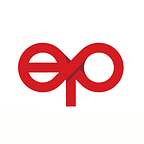Ecosystems at scale — a Shenzhen safari
China speed, China scale were phrases repeated multiple times as Explorium, partnering with MIT’s Innovation Node, brought a team of senior leaders from across the Fung Group on a ‘Shenzhen Safari’ to learn from the cutting edge of scalable innovation in China.
The May 16th safari — the third organised by Explorium — started out at Vivo, a handset/digital device brand that in a handful of years have captured 20% of the Chinese mobile phone market with a strong integration of brand and technology leadership targeted at a young audience. Dr. Victor Fung then hosted a lunch talk by Dr. William Cheuk, who presented his startup Move-It and how the company is able to leverage the ecosystem architecture of Xiaomi as well as the Greater Bay Area. The final stop was WeBank, Tencent’s microlending solution that in 18 months has managed to gain close to 150 million customers by leveraging WeChat, implementing a highly scalable IT architecture, and a strong focus on partnerships. China speed, China scale.
At the wrap-up of the safari, it was clear that there is a number of learnings for corporate innovators and champions in Hong Kong around how these businesses innovate, how we learn from them in a relevant way, and next steps to take out of their playbook:
- Scalability is about proper architecture. WeBank has managed to build an IT architecture where the annual cost per customer is $3.70! This allows the bank to profit on microloans that average just RMB100 — and to capture such a huge market very quickly.
- Modularity is key. In order to build consistent and robust IT infrastructure, WeBank has developed a distributed and modular ‘LEGO’ architecture based on several components: universal hardware, WeBank only deploy on x86 PC servers; universal software, WeBank use tried and tested languages, like MySql and java, on Linux, a tried and tested open source platform. This allows for interchangablility and easy upgrades of hardware, software, and talent.
- An organism of identical cells. WeBank utilises a distributed system of servers, each acting as a virtual bank branch serving 5 million users. Each ‘cell’ is a self-contained system containing all products and services, allowing the bank to A/B test new initiatives in just one cell, create sandboxes, do gated releases, and, impressively, double capacity in 36 hours.
- Inject strong brand values as upstream as possible. Vivo has managed to simplify the brand to ‘tech’ and ‘trend’ as an overall umbrella, with niche lines catering to more specific needs. These values, together with continuously updated consumer insights, are part of the product pipeline through regular cross-functional meetings between brand, product, innovation, and other departments.
- Ecosystems are about mutual support. Move-It, as a health oriented hardware/software startup, is taking advantage of being part of Xiaomi’s ecosystem of factories, startups, other vendors, and — of course — it’s network of Mi stores. This ecosystem allows for mutual trust building, access to financing and retail (Mi stores) for the startups, the ability to produce smaller pilot product quantities, and leveraging of the ‘ecosystem’ brand for those on the inside. Very Confucian.
- 3+3 principle. The Webank team shared they follow the 3+3 principle when launching new products: 3 months to go from idea to market and 3 months to prove it works. This way of working creates accountability in the organization as the team that designs a product is tasked with operating it to prove that it works. In addition, the principle facilitates practical learning and capacity building in the organization.
While the Shenzhen safari ended with a round of Heytea bubble tea for all participants on the way back to Hong Kong, the team carried forward the learnings from the outing as seeds of inspiration for new ways of thinking and working that achieve speed and scale, and a new group of friends and potential future collaborators.
